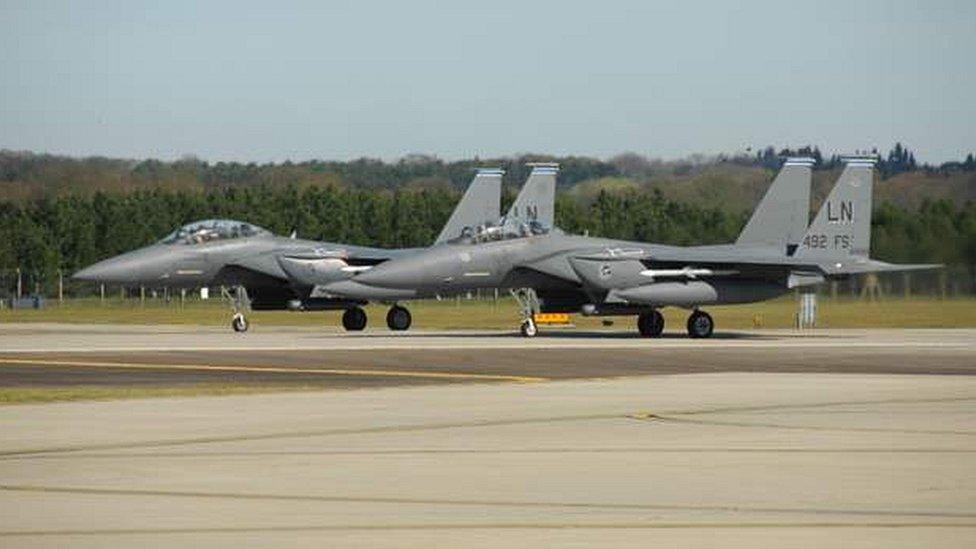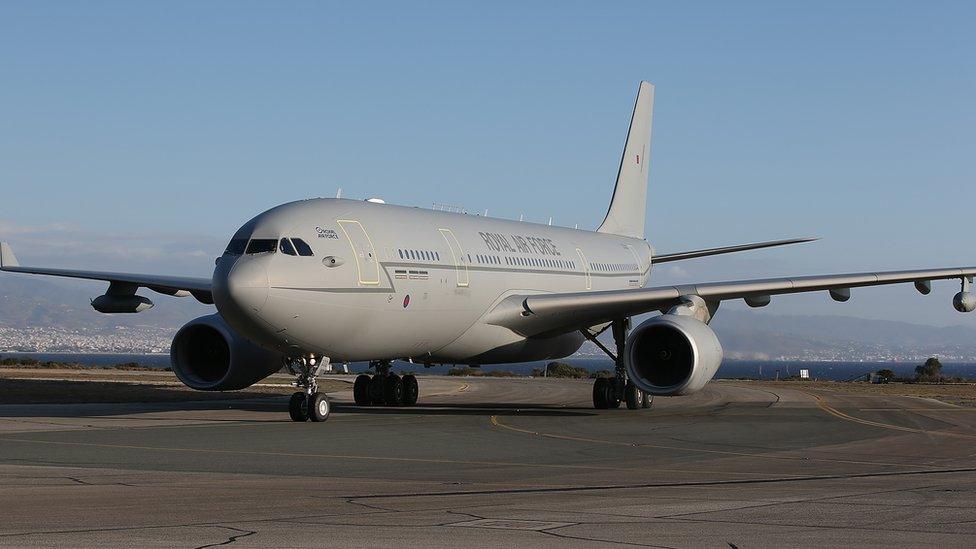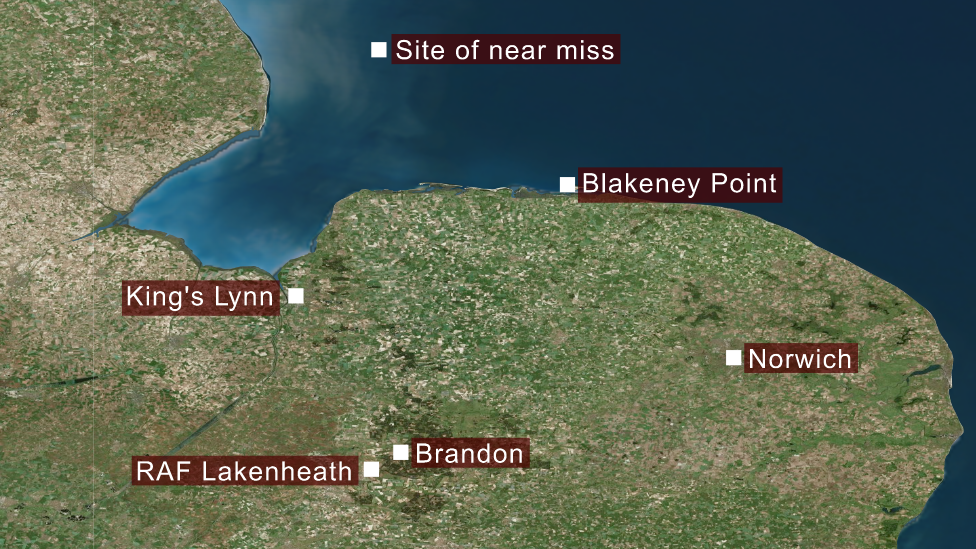US F-15s and RAF tanker in near-miss over north Norfolk coast
- Published

Two F-15 fighter jets like these were not prevented by military air traffic control from entering same airspace as an RAF Voyager
Two US fighter jets and an RAF tanker aircraft came within seconds of a mid-air crash, a report has revealed.
The pilot of the RAF Voyager tanker claimed one of the US F-15s flew as close as 50m (160ft) before roaring past to avoid a collision.
The tanker pilot claimed he could the feel turbulence from the F15 flying at 402mph as it boosted its speed.
The Airprox Board, external blamed the near-miss on a military air traffic controller becoming distracted by a phone call.
Mid-air refuelling
It added confusion had also been caused over the geographic naming of the refuelling area in the Wash.
The incident happened in January this year at a height of 16,000ft, about 10 miles off the coast of north Norfolk, after the Voyager from RAF Brize Norton had refuelled two RAF Typhoons in mid-air.

The pilot of the RAF Voyager, like the one pictured here, reported the encounter immediately
The report found that a military air traffic controller based at Swanwick, Hampshire, misunderstood the flight path of the F15 pilots, thinking they were flying south in the geographic Wash area.
But the US crews from RAF Lakenheath, Suffolk, were referring to the Wash Aerial Tactics Area (ATA) further north, which was also the refuelling area where the tanker was flying.

Area where collision averted
'Increased workload'
The report said the controller was further distracted after he "answered a landline that was not his responsibility, and had became embroiled in a distracting and complicated" call.
It added this "served to further increase his workload and resulted in him focusing on that task rather than on the F15s".
The investigation found that pilots of the F15s had been flying visually at the time so had failed to spot the Voyager on their radar.
The UK Airprox Board concluded that given that the F15 pilot was unaware of the Voyager until it was so close, there was a "serious risk of collision where luck had played a major part" in avoiding one.
It was classified as a Category A - the highest risk.
The Board welcomed the joint US and UK air force investigation which recommended changes to "include a review of the naming of the Wash ATA areas to avoid future confusion".
- Published4 September 2015
